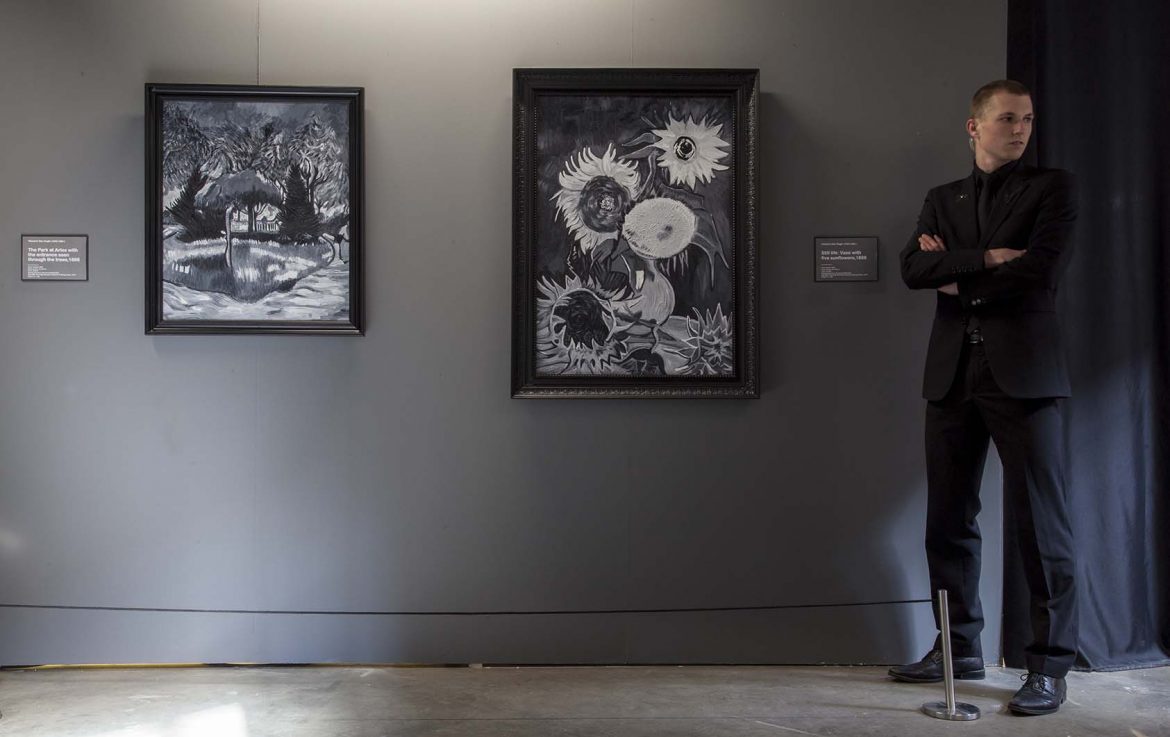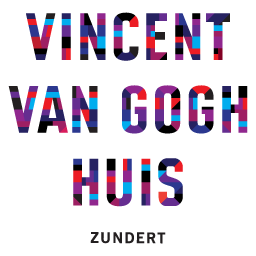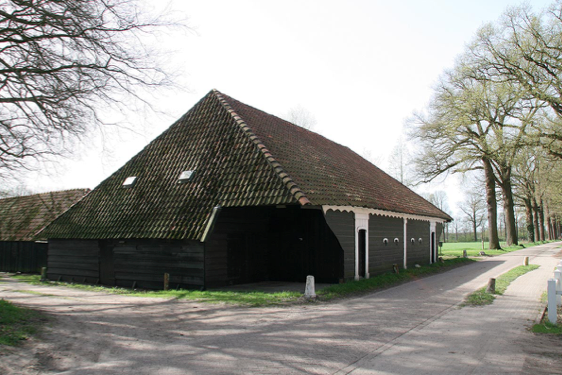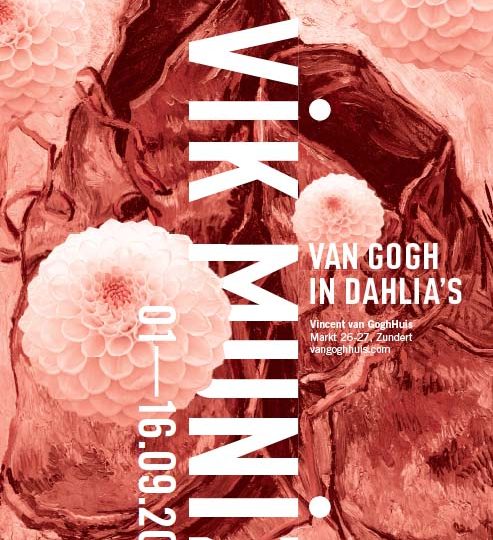
Van Gogh paintings (icons in art-history) reproduced in contemporary works of art, but in quite a different way and thereby taking on a completely different meaning. This is what the exhibition ‘After Van Gogh’ shows us in the widely divergent works of six very outspoken (inter)national artists. The exhibition organized in the Zundert based Vincent van GoghHuis stimulates the senses. Things are not what they seem. With works of Suat Ogüt, Matthew Day Jackson, Raul Ortega Ayala, Niek Hendrix, Stijn Peeters and Vik Muniz. On view from June 3rd, 2018 until January 6th, 2019.
When you visit the exhibition in the Vincent van GoghHuis, you initially think you’ll get to see works of art by Vincent van Gogh. These works are, however, re-interpretations of Van Gogh’s works by contemporary artists, thereby updating Van Gogh. Their manipulations deliberately put the visitor on the wrong track. For instance: Suat Ogüt (Turkey, 1986) shows us a series of five Van Gogh paintings which were lost in a fire during World War II called ‘Van Gogh Museum/Collection of Missing Titles’. Black-and-white photographs of these works were, however, preserved. In order to make these lost art-history treasures visible again to the public, Ogüt re-created them in many tones of grey. The wall on which they are exhibited is also grey, which emphasizes the historic character of these artworks. The exhibition space is an exact copy of the exhibition space at the Van Gogh Museum in Amsterdam.
In the same series of lost Van Gogh’s, but depicted in quite a different manner are the works by Matthew Day Jackson (USA, 1974). He re-created Van Gogh’s work of art which was burned in World War II into a three-dimensional object, depicting the quietness of the moment of burning into carbonization. In the burnt wood, we can see the strong outlines of the relief depicting ‘The park in Arles with the entrance seen through the trees’.
Another piece of work, which also shows us a lost Van Gogh, is by Raoul Ortega Ayala (Mexico, 1973), Still Life with Meadow Flowers and Roses (After Vincent van Gogh). In this work of art, he reveals the underlying painting of a flower piece by Van Gogh from the collection of the Kröller-Müller Museum: two wrestlers Vincent painted at the art academy of Antwerp. This work of art is part of a series called From the Pit of Et Cetera, in which Ortega Ayala examines Social Amnesia ( after the American historian Russell Jacoby) in-depth. In order to create this work of art, the artist used an x-ray from the museum’s archive in order to poignantly re-visualize the ‘unknown painting’ again.
Stijn Peeters (the Netherlands, 1957) participated in the Van Gogh AiR program in December 2017. While staying in the guest studio in Zundert he made reproductions of Van Gogh’s works, using graphics techniques. Peeters chose images which point out Vincent’s compassion with human suffering. We see diggers, wood carriers, and miner’s women carrying sacks (‘The bearers of the burden’). Peeters then transformed Van Gogh’s characters into present-day refugees who (also often carrying a heavy load) color the landscape these days and who require our compassion. This series lies at the core of a special edition of his own art magazine Ezel. This publication will be presented at the opening of this exhibition.
Niek Hendrix (the Netherlands, 1985) reproduced amongst others in charcoal one of Van Gogh’s juvenile drawings, for the collection of the Van GoghHuis. The transitory nature of such a juvenile work (which is, at present, located in an unknown private collection) is accentuated by the deliberate non-fixation of the drawing. According to Hendrix, this new version is also not made for all eternity. The second work of art shows us a recollection of Vincent’s first studio in Etten (NBr.). It is a reproduction ( in trompe l’oeil fashion) of a print of The Sower by Millet, which Vincent reproduced in Etten. Finally, Hendrix painted a copy of “The green parrot” in different tones of grey. The misleading aspect of this work is the fact that Van Gogh painted it after a stuffed bird.
Photographer Vik Muniz (Brazil, 1961) is well-known for his depictions of western art history, which he copies using improbable materials such as snippings of paper, waste or plants. He doesn’t have the intention to deceive the public but to stimulate reflection on the reliability of the image. He forces us through his photographs to see and observe the process.
“All I want is to make the worst illusions imaginable that can still convince the average person…Illusions as bad as mine will awaken people to the deceptiveness of visual information and to the pleasure that can be derived from this. These illusions are made to dismantle the architecture of our concept of truth. This makes them meta-illusions”.
With this Muniz pointedly summarizes the initial aim and intention of the ‘After Van Gogh’ exhibition. He presents us with two large photo prints: Irises and Vase with sunflowers.
Vik Muniz – Van Gogh in dahlias
Zundert is well-known for the annual dahlia flower parade. Studio Vik Muniz has been asked to create a special new work after Van Gogh for the Zundert flower parade in September 2018, made from dahlias. This event will take place in the garden of the Van GoghHuis, on an empty plot of 10 x 20 meters. The execution of this work of art will be realized with the help of the enthusiastic team of volunteers of the Van GoghHuis, amongst whom are experienced flower parade builders. Vik Muniz’ performance adds an extra activity to the exhibition. Visitors will be able to follow its process beforehand and look at the dahlia tableau during the parade from above the special (projection) tower which will be built in the Van Goghgarden. The work will be on show from 1st until 16th September. This project’s results (photo prints) will then be added to the exhibition.


